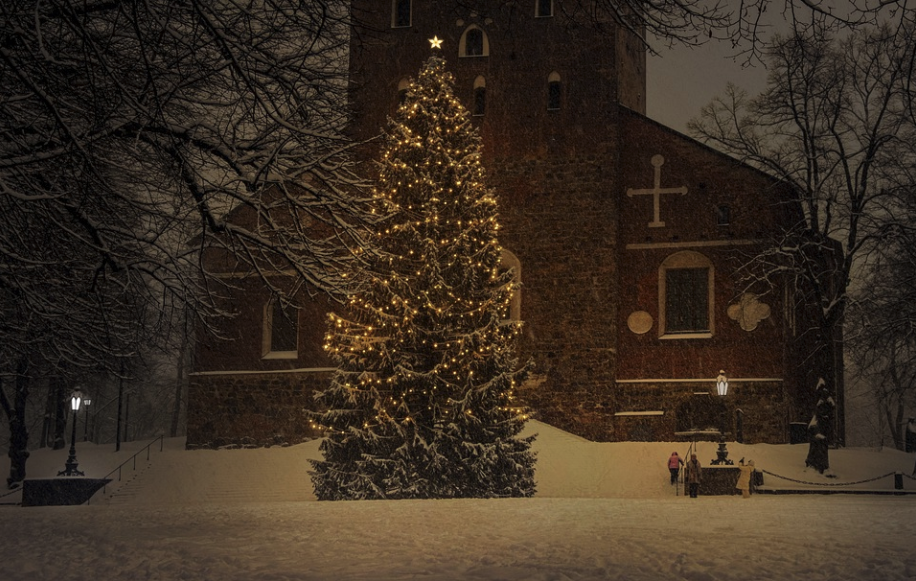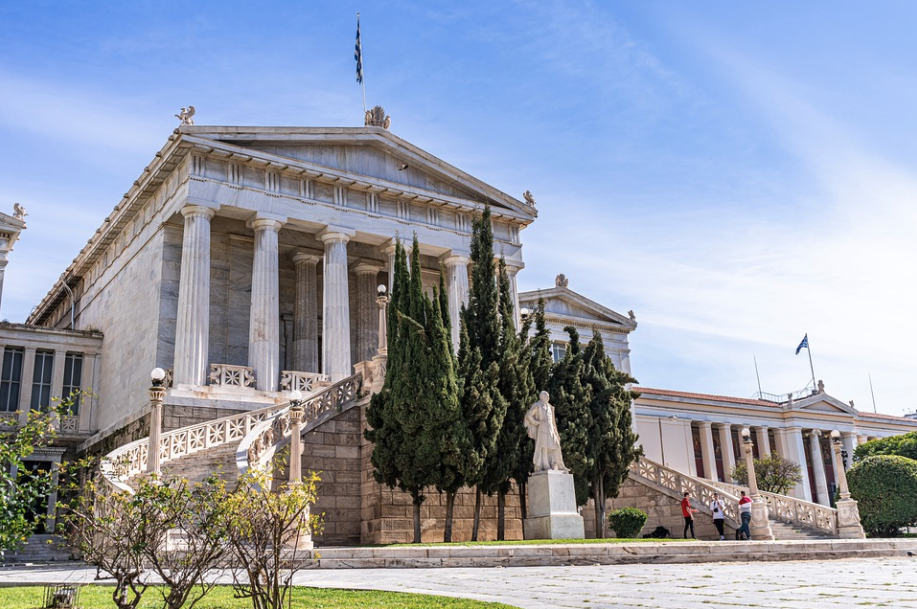Navigating our complex world of loud news and louder opinions can be incredibly difficult. It helps to hold on to our own opinions and ideas loosely. This doesn’t mean that we just go with whatever other people are saying or doing. But it does mean that we are open to changing our minds on things.
When I was a student of philosophy some 20 years ago, I was deeply enamored with discussions around meaning. Meaning can refer to the grand search for purpose and direction in life. Or it can refer simply to what words point to, what they mean. I was fascinated by the way meanings change, especially in religious or politically significant contexts.
What is a Christmas Tree?

A few years ago, I listened to a podcast that brought this home beautifully. In it, a historian of religion talked about Christmas trees. What do they symbolize? Where do they come from?
Some people will be astonished to learn that it came from a pagan practice that took place around the depth of winter (late December, to be precise). As far back as ancient Roman times, people decorated their houses with wreaths and evergreen plants this time of year to symbolize the persistence of life in a time when many plants had gone dormant for the winter.
In the 16th century it is believed that the Protestant reformer Martin Luther (1483 – 1546) placed candles in an evergreen tree. Other accounts trace the adoption of trees by Christians to around the same time elsewhere in Germany. And by the 18th and 19th centuries the decorated trees became a commonplace in Christian homes around the holiday.
So, we can see that they are a relatively new adoption in the history of Christianity. And we see that they have an even longer history within non-Christian traditions. Today, many non-Christians maintain the tradition of putting up Christmas trees in the winter. Thus we might be tempted to ask, are they Christian, or are they not?
While the question may seem silly, or of the sort aimed at starting a theological argument, it can be very useful to ponder this in a place free of contention.
Things Change, Enjoy it

The fact of the matter is, if you ask 10 different people what a Christmas tree symbolizes, you’re likely to get 10 different answers. All of them will contain part of the broader reality. And to them, all will be true. The trick is having an open stance to the many angles that others will bring to the conversation.
One of the great joys of change is the fact that with it comes opportunity. If everything was set in stone, there would be no possibility of any more good coming into the world. With change, we can also see that we can help shape our world and reality.
One of my favorite examples for this is the humble seat or chair. What is a chair? Well, we can imagine a nice office chair. Or a comfy lounger. But imagine if we were walking through the woods and grew tired and wanted to sit down. Perhaps, now that you need a chair, many things can suit that purpose. You find a nice fallen tree and “bam” you have a chair.
Practicing Mindfulness where ever we are

This leads us to an important point about mindfulness. It can be religious. Most early Western popularizers of mindfulness like Jon Kabat-Zinn and Sharon Salzburg learned mindfulness from Buddhists. The great Vietnamese Zen Master Thich Nhat Hanh, who passed away last month, is often described as “the father of mindfulness.”
As we practice mindfulness, it’s incredibly helpful to know this history. Sure, mindfulness as a term is English. And simply “being mindful” can be said to be a universal human practice. So perhaps a certain amount of personal practice and development of mindfulness can be done without much background knowledge. But like our understanding of Christmas trees, it’s so nice to have a full understanding of the history and many practices and meanings that got us here.
Dr. Ira Helderman, a psychotherapist and historian of religion, has also noted the religious roots of talk therapy. Historically, it comes from Judaism, Mesmerism, and the Catholic tradition of confession. So in a way, even very basic forms of therapy practiced today have roots in religion.
Universities, too, grew out of religious institutions. Around the world, early universities were primarily a place of training for religious elites to know more about the world more broadly. Over time, they became seen as a public good. In America, the first truly public university was the University of Georgia, which was founded in 1795. Harvard, which was founded in 1636 by New England’s Puritans, began under church sponsorship, though it no longer has ties to any religious body.
Mindfulness as a body of practices seem to be doing the same thing. Right now, they are largely associated with their Buddhist roots. But as time goes forward and more non-Buddhists take them up and make them their own, we’ll see the more and more as secular. These two words, “religious” and “secular” can cause strong reactions in some people. It’s helpful to know that many things once deemed “religious” are now easily considered “secular.”
It’s also helpful to be conscientious and respectful to the many different views out there about mindfulness. As I’ve practiced it over the last 20 years, I’ve seen my own understanding and views change. Yours surely will too. And, who knows, maybe those of people around you will as well.
 Justin Whitaker, Ph.D., holds a doctorate in Buddhist ethics from the University of London. He has given lectures, and taught Buddhist studies and Philosophy at Oxford University, the University of Hong Kong, the University of Montana, and at Antioch University’s intensive study-abroad program in India. A certified meditation teacher, he is a regular contributor to Patheos.com, and Senior Correspondent for Buddhistdoor Global. He lives in Missoula with his family.
Justin Whitaker, Ph.D., holds a doctorate in Buddhist ethics from the University of London. He has given lectures, and taught Buddhist studies and Philosophy at Oxford University, the University of Hong Kong, the University of Montana, and at Antioch University’s intensive study-abroad program in India. A certified meditation teacher, he is a regular contributor to Patheos.com, and Senior Correspondent for Buddhistdoor Global. He lives in Missoula with his family.
